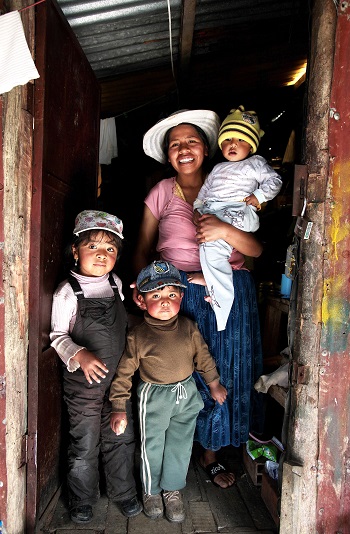RAPAPORT... Roughly 14 million to 19 million people work as artisanal
and small-scale gold miners (ASGM) in developing countries, according to a 2017
study. Many of them use mercury, a permanent, potent neurotoxin, in order to be
marginally efficient in capturing gold. These people mine to live, and in the
process, they inadvertently release more than 8,000 pounds of mercury into our
environment every day, the United Nations Environment Programme (UNEP)
estimates. They are poisoning themselves and the rest of us as mercury vapors
and micro-particles are transported globally on winds and ocean currents.
ASGM produce approximately 20% of the world gold supply each
year, and the jewelry industry purchases more than half the annual production.
We are the primary buyers and sellers of gold mined with mercury, and we
haven’t yet found a way out of this potential quagmire.
Opportunity to disrupt
That said, working toward a solution may be the greatest
opportunity the jewelry industry has ever had. We can be the vanguard of change
by publicly declaring our commitment to discovering a viable replacement for mercury
and creating a clean gold supply chain, while empowering the world’s artisanal
gold miners. We can innovate and disrupt ourselves in a way that captures the
world’s attention and earns its respect.
“If disruption is going to define the next chapter of the
jewelry industry, then the ability to create and sustain innovative, meaningful
and powerful connections with our customers will determine who succeeds and who
does not,” said Signet Jewelers CEO Gina Drosos in her keynote address at this
year’s JCK Las Vegas show. “Business as usual is insufficient. We must lead
disruptive innovation now.”
While the innovations I propose may be different from what
she had in mind, it is clear that we must transform if we are going to thrive.
The business of caring
A fundamental aspect of being human is the desire to
contribute to others and to the quality of life. Our industry has been built on
— and prides itself on being the business of — celebration, acknowledgment,
appreciation, connection and love.
But there’s an aspect of our trade we’ve been unable to
celebrate fully. Artisanal gold miners have supported our businesses and
lifestyles for hundreds of years, and it’s about time we told their story and
acknowledged their contribution. It’s time we let the world know we care about
our industry partners and their health, and are committed to finding a way they
can mine safely and profitably.
Our customers don’t buy what we do, they buy why we do it.
They want to be inspired and have an emotional connection with us. They want to
feel our passion and know we care about something more than just selling them
shiny things so we can make a profit — namely, that we care about these miners,
our environment and the future of life on the planet.
A three-pronged plan
To that end, I propose we commit to
implementing three industry-disrupting innovations. By following through on
these commitments, we will establish a deep emotional bond with our customers
and boost their perception of us as a creative, responsible and caring
industry.
Let’s begin by acknowledging the massive global problem of
toxic mercury in our gold supply chain, and sharing it with the world. We’re
much better off publicly addressing these concerns ourselves than having the
media conduct an exposé. Such forthright authenticity will engender new levels
of trust and respect for jewelers.
Second, let’s take a bold stand on solving this problem by
incentivizing scientists, engineers and innovators to come up with a safe,
effective, affordable and scalable replacement for mercury in ASGM.
Finally, let’s acknowledge and celebrate our artisanal gold
miners, declaring our commitment to their health, well-being and prosperity, as
well as the well-being of all life.
By marshaling the world’s technological prowess, utilizing
our massive computational power and crowd-sourcing the knowledge of 3.2 billion
people online, we can discover a material or process superior to mercury for
artisanal miners.
We can empower ASGM and their families, dramatically reduce
global mercury pollution, bring about a responsible gold supply chain, and
contribute to the health of all people and the global environment.
Together, we can make a greater difference than we’ve ever
dreamed possible and have our businesses thrive.
Toby Pomeroy is a designer and goldsmith, as well as the founder of an
Oregon-based sustainable-jewelry brand that bears his name. He is also an
activist for social and environmental responsibility in the jewelry industry.
He is on the board of the Alliance for Responsible Mining (ARM) — which created
the Fairmined Gold Standard — and founded the Mercury Free Mining Challenge, a
global call to engineers, scientists and academics to discover a safe,
effective alternative to mercury. mercuryfreemining.org
This article was first published in the August 2018
issue of Rapaport Magazine.
Image: A family living in the Zaragoza region of Peru. Credit: Nigel Wright
|
|
|
|
|